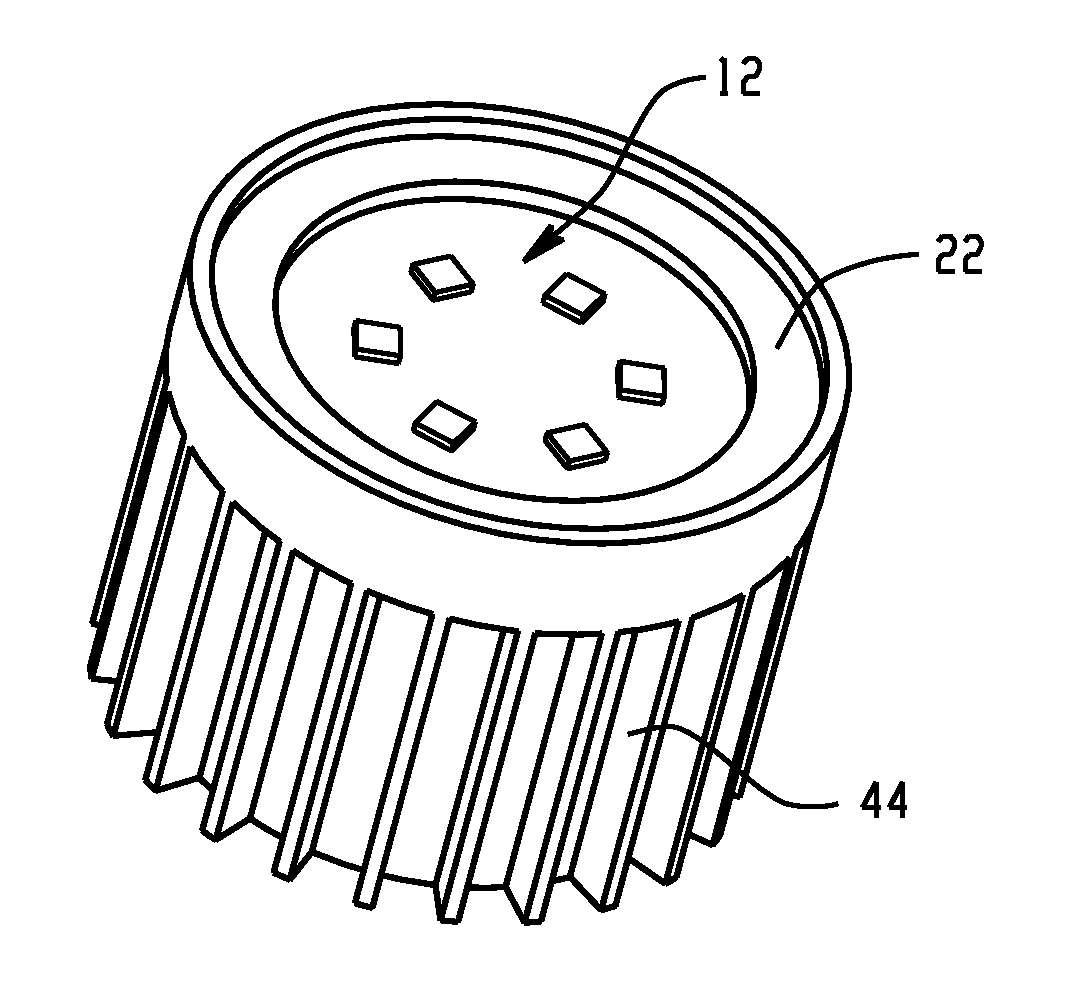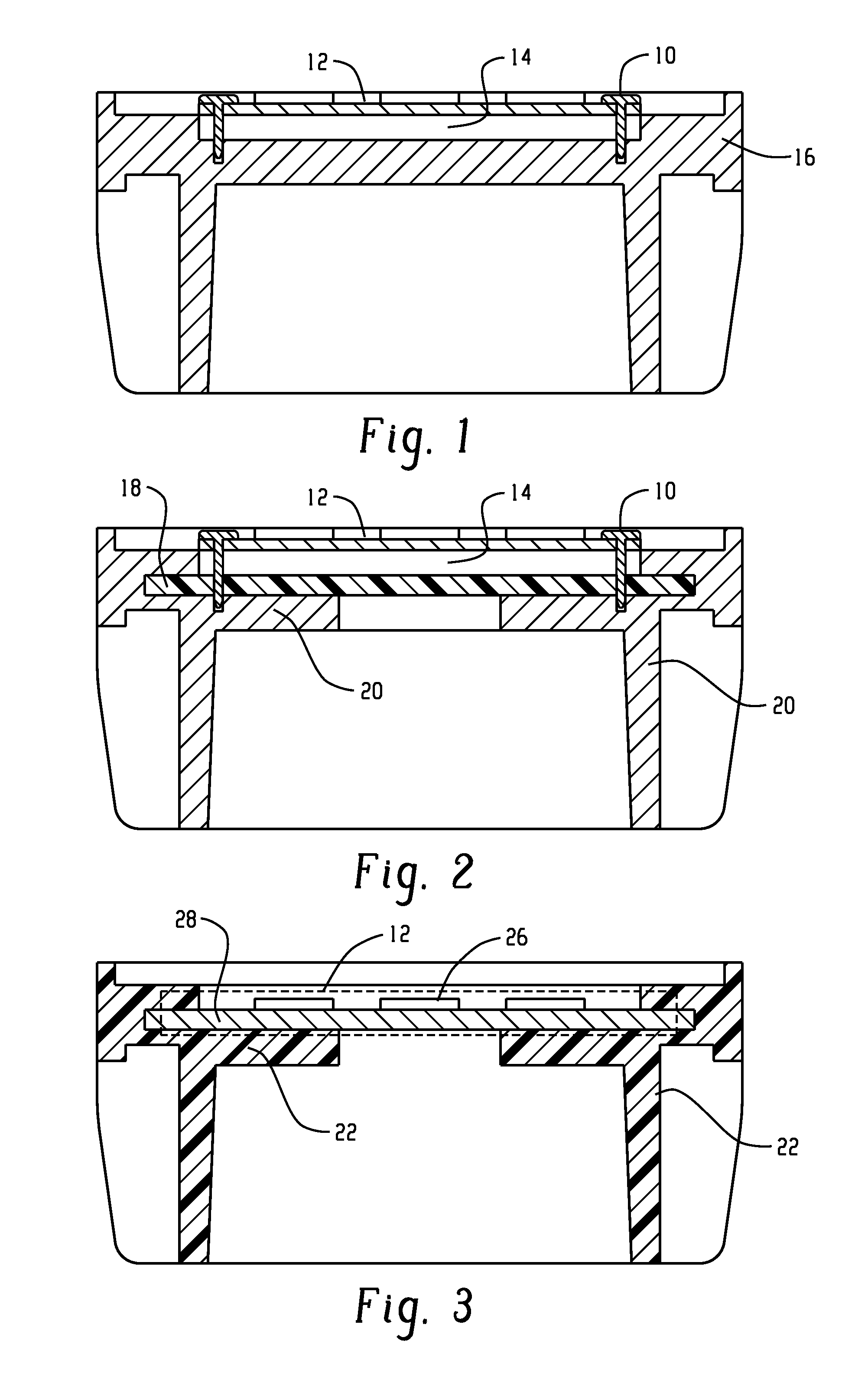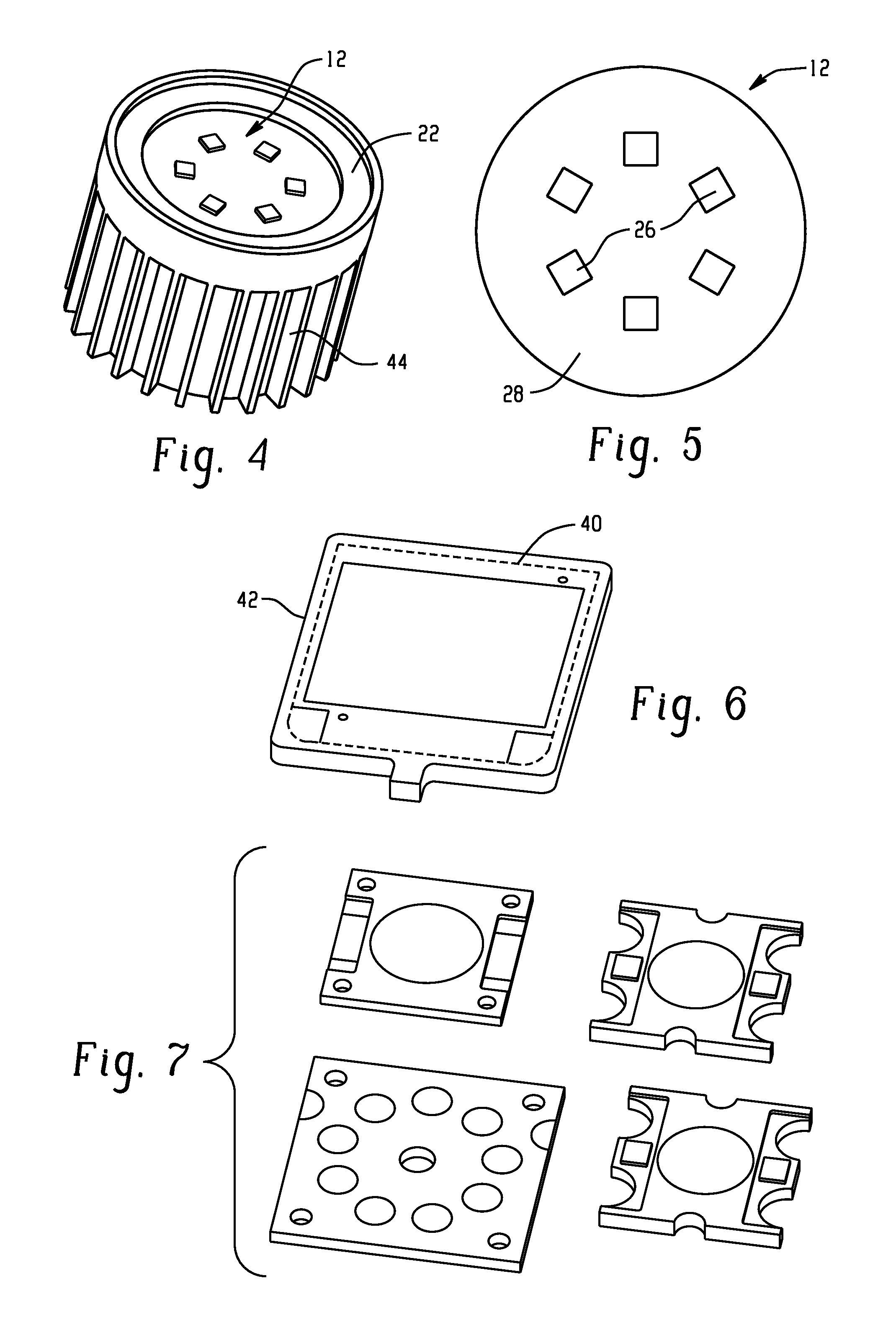LED plastic heat sink and method for making and using the same
a heat sink and led technology, applied in the field of heat sinks, can solve the problems of increased cost and processing difficulties, performance degradation or even damage, and the size of metal core printed circuit boards, and achieve the effects of enhancing productivity, reducing weight, and enhancing design freedom
- Summary
- Abstract
- Description
- Claims
- Application Information
AI Technical Summary
Benefits of technology
Problems solved by technology
Method used
Image
Examples
example 1
[0081]Thermal CAE (computer aided engineering) analysis (simulation) comparing a baseline design with hybrid design architecture described herein (e.g., FIG. 2 including a plastic heat sink). FIG. 1 illustrates an aluminum baseline design. FIGS. 2 and 3 are the models used for analysis. For all 3 samples, the outer diameter with the fins is 58 mm, the height of the heat sink is 33 mm, the number of fins is 24, the wall thickness is 1.5 mm, and the volume is approximately 20.6 cm3.
[0082]As the material changed from aluminum (Al) to plastic in the hybrid design, the degree of design freedom enables designers to achieve comparable heat dissipation performance of an Al heat sink. Accordingly, comparison only between the plastic architecture set forth herein and the hybrid design is reasonable. In this computer simulation, it is assumed that there is no air gap during TIM processing in the hybrid design.
[0083]The LED junction temperature of the design for FIG. 1 is 51.09° C. while the hy...
example 2
[0084]Thermal CAE (computer aided engineering) analysis (simulation) was conducted on various hybrid designs proposed herein. For a three watt heat source on a LED chip, simulations were conducted to determine the effectiveness of these designs. For all of the tested designs, a reduction in temperature of the LED chip was observed. More specifically, Table 1 below sets forth the results of the thermal analysis testing on these hybrid designs. Sample 1, considered as the baseline case, is illustrated in FIG. 19A; Sample 2 including lancing provisions 86 is illustrated in FIG. 19B; Sample 3 including embossing 90 (height of 1.4 mm) is illustrated in FIG. 19C; and Sample 4 including lancing provisions 86 with inside fins 44 is illustrated in FIG. 19D, with a height of 4 mm and radius of 3 mm (see FIG. 20). All of Samples 1-4 had the same the outer diameter with the fins of 58 mm, the height of the heat sink of 33 mm, the number of fins of 24, the wall thickness of 1.5 mm, and the volum...
PUM
 Login to View More
Login to View More Abstract
Description
Claims
Application Information
 Login to View More
Login to View More - R&D
- Intellectual Property
- Life Sciences
- Materials
- Tech Scout
- Unparalleled Data Quality
- Higher Quality Content
- 60% Fewer Hallucinations
Browse by: Latest US Patents, China's latest patents, Technical Efficacy Thesaurus, Application Domain, Technology Topic, Popular Technical Reports.
© 2025 PatSnap. All rights reserved.Legal|Privacy policy|Modern Slavery Act Transparency Statement|Sitemap|About US| Contact US: help@patsnap.com



